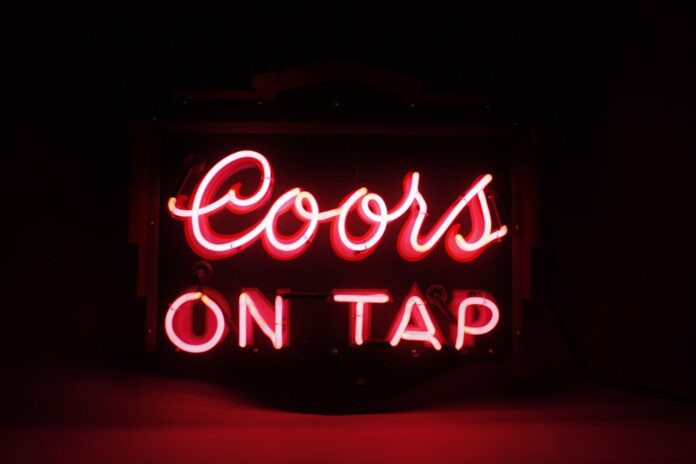Heidi Harris grew up near Golden, where the Coors brewery was a fixture of the skyline. But she had never taken the popular tour of the historic brewing facility until about eight years ago when she started working there.
In 2015, Harris joined Coors — now part of the Molson Coors Beverage Co. — as its corporate archivist, tasked with maintaining the official record of the beer pioneer, which was founded in 1873 by German immigrant Adolph Coors.
Today, her office is a 9,500-square-foot cell on the third floor of Coors’ hop storage building in Golden. There, in the climate-controlled room, she’s surrounded by photos, documents, ledgers and promotion materials, many of which date back a century or more.
“It’s not quite filled to the brim, but there’s a lot of stuff in there,” Harris said.
On Saturday, Coors celebrates its 150th anniversary with a free street fair in downtown Golden (1 to 6 p.m.) that includes live music, outdoor games, food and, of course, beer. Ahead of that, Harris offered a deep dive into the archive with 10 artifacts that tell Coors’s story, from 1891 to 2021.
1891: Original beer label trademarks
Some of the oldest artifacts in the Coors archive show the beer business at its beginning. And even in 1891, the government required trademarks and patents for bottle labels to ensure they displayed all the necessary information. That also helped ensure creative aspects like font and artwork weren’t being used by any other company, Harris said.
These trademarks are for Coors Golden Lager and Coors Pilsener. Harris especially loves that Adolph Coors’ signature remains intact.
1893: Medals from the World’s Columbian Exposition
Coors entered the beer competitions at the World’s Columbian Exposition, which was the 1893 edition of the world’s fair in Chicago, and won two medals – for a porter recipe and for a lager – and was the only beer maker west of Missouri to do so, Harris said.
1916-1957: Coors milk tins

During Prohibition, Coors began producing malted milk, among other products, since it was no longer legal to brew beer. The venture proved so successful – according to Harris, Hershey’s was among Coors’ many buyers – that the company continued to make malted milk until 1957 when demand for beer necessitated using the production space.
1940s: Sales and marketing materials
Back before marketing efforts were measured in click-through rates, Coors salesmen would go door-to-door to bars with binders chock full of materials about the brewery. These binders included maps locating Coors’ billboards, facts about the beer, and scripts for radio advertisements that would help sell the beer to customers. Coors also distributed neon signs to its accounts. The one above, also from the 1940s, still lights up, Harris said.
1959: Coors Banquet aluminum cans

Beer in aluminum cans may be commonplace today, but in 1959 it was a novel concept. Then brewery leader Bill Coors pioneered the design for this Coors Banquet can and effectively paved the way for the beer industry to shift to aluminum from steel. Steel cans were previously three pieces – a body with two separate ends – but Coors’ aluminum design was only two pieces that included the body and the top.
1980s: A memorable mallet

Contrary to the evolution of beer cans, beer kegs were historically made from aluminum. The 1980s saw a move away from that material to steel. This mallet hammered the stopper (known as a bung) on the last aluminum keg of Coors beer. According to Harris, Bill Coors tapped a retired employee who spent decades working on the keg line to do the honors.
1980s: TriviaQuest bartop game

Bored at the bar? Not when sitting in front of Coors’ original video game, TriviaQuest. For a quarter, drinkers could test their knowledge of pop culture. While TriviaQuest is no longer a bartop staple, this one in the archive still functions.
1982-1983: Mascots BeerWolf and Corby

Coors added some creativity to its advertising in the 1980s with the addition of two new spokespeople. BeerWolf came about during a Halloween promotion, Harris said, while Corby capitalized on the success of “Star Wars” and robots like R2D2. The latter boasted functions like moving its arms to be able to serve beer trays and playing music via an embedded 8-track player. Corby’s wrap is also a magnet, so it’s literally a walking advertisement.
1994: Coors Light Sun Cans
Coors began experimenting with its packaging with the release of Coors Light Sun Cans in 1994. When the cans were exposed to sunlight, summery designs like sunglasses and snorkels appeared in black. The cans were a one-time promotion because “who wants to drink hot beer?” Harris said. But they paved the way for Coors Light’s mountains that turn blue when the can is cold.
2021: Hungry Beer Man dinner

During the 2021 holiday season, Coors Light and Hungry Man paired up for a promotion: A frozen holiday feast that came with a can of beer all in one box. Notice the warning to remove the beer before placing the meal in the microwave.

















